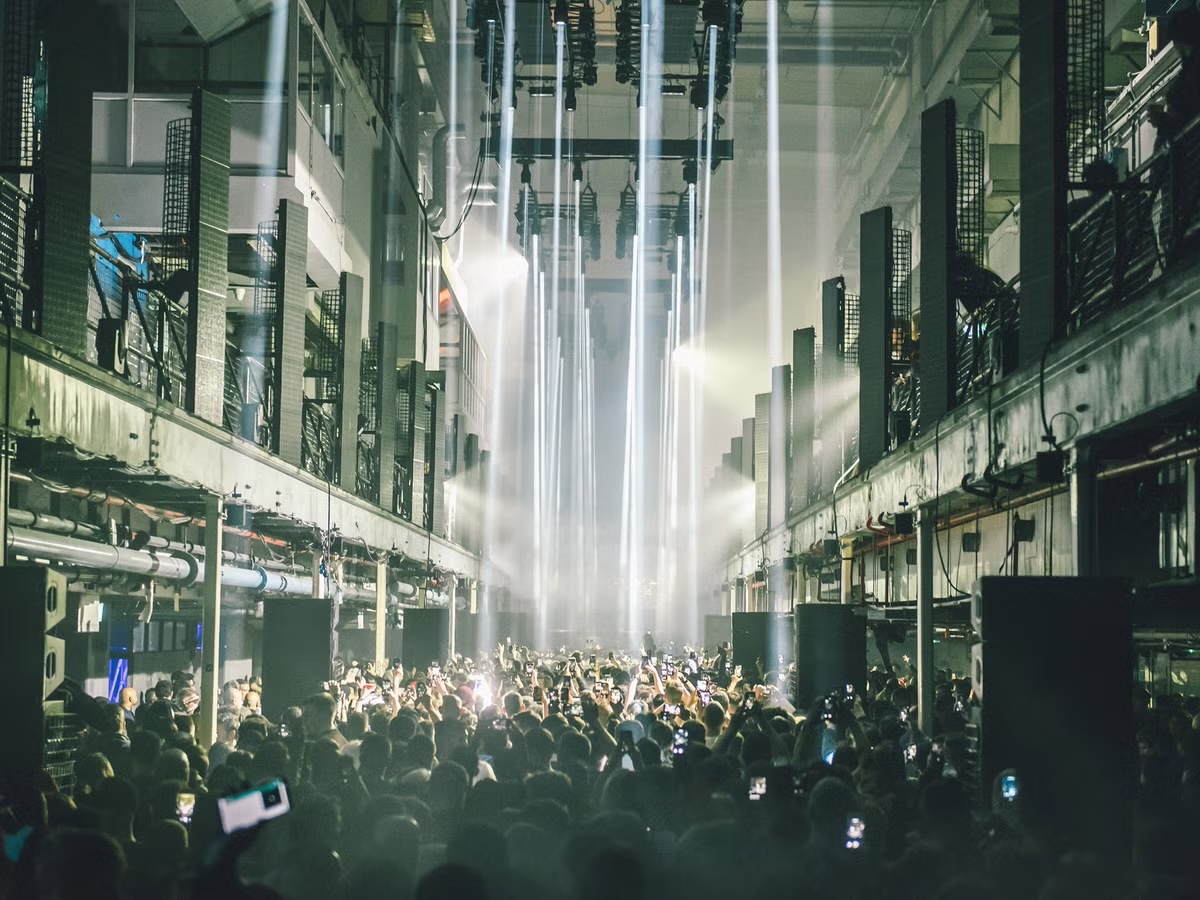The Art and Science of Vibe Engineering
"why are some parties good?"
14.12.23 00:12am
There used to be a club in London called Printworks.
I only actually went once, in November of last year. I was a bit weirded out by the 5PM start time of the event, doors closing at 6 (most London clubs don’t really start until midnight at the earliest). It was a Thursday, I think. Anyway, it started on time, as advertised, and my friends and I quickly grabbed all the shooters I could and downed them before heading in.
There were two rooms - the press halls, and the ink wells. There was a collective of techno DJs playing that night, called Erased Tapes. I didn’t know a single one. We checkout out the Ink Wells first, and it was crowded and smoky. As we made our way to the front and the bass got louder, and the DJ started mixing some ridiculous samples together, I got the funniest feeling. I’d had it before at festivals, but never in a club. I guess I’d call it the “rave state?” It’s a kind of meditative, depersonalised dancing, where you’re taking in your own senses but don’t really feel like one person. You become part of this superorganism of people, one giant mass synchronised by bass. I suspect it’s what religious ceremonies would feel like, if I ever went to those. Whether someone enjoys EDM music is pretty much entirely dependent on whether they’ve been able to reach this state. Until you do, it’s very hard to get the appeal.
The Press Halls were even better - a cavernous seven-story cathedral with a huge LED screen in the back. Somehow, the acoustics worked out. As you progressed towards the front, the crowd got more Bohemian. Real ravers, you could tell. One guy was looking back at us through huge thin shiny glasses, just dancing and sketching. He showed me he was sketching out vignettes of the crowd. I think he was dead sober. I must have spent four or five hours there, just listening and dancing. I don’t think I had much to drink at all - I found I didn’t need to. Once you’ve made it to that state, you’ve made it for the night.

I bring all this up because it’s not an isolated incident. Printworks sadly closed the next season as land prices increased, but it had a phenomenal reputation as one of the world’s best clubs. Across London it was known as in a different league to everything else - like our own mini-Berghain. The hard part is that I can’t explain why. All the measurable things there - good audio, good artists, lighting etc. have been better at other places I’ve been, and yet none of them worked as well in concert.
That was one of the first examples of a problem I found in *vibe engineering*, a word that I think I made up but shares a lot with what Andres Emilsson, the QRI and associated people talk about (I found them later down this rabbithole).
The question was: “how do you take 1000 strangers and convince them have fun together”. It’s obvious that if you just teleported random people to a room and played music, it wouldn’t work. Nobody would dance, everyone would leave.
If you asked the Printworks manager this question, I think he’d give a bunch of heuristics. The music, the lighting, the sound quality, the aesthetics of the signage, etc. Most clubs and festivals seem to be in a kind of gradual evolutionary process where advantageous traits are incrementally propagated (e.g. one festival had rollerskates available, now they all do. One club switched from pop/hip hop to electronic, now they all do). The whole thing is too financially risky to make a big bet on all at once.
Vibe Engineering is the art/science of empirically testing these heuristics. I think this applies to every gathering, not just dance events. Spaces have distinct vibes, and that’s a huge part of why Printworks worked. Home has a smell, and a texture. There are a million little factors that control how we feel and experience.
I’ve been doing “research” by myself for a year, and I’ve got some cool results:
“Space > Music > Lighting > Sound Quality > FX” is the rough hierarchy of principal components of a party’s vibe. We conclude too little time is spent on decoration and lighting.
Nothing can alter the underlying vibe distribution of a set of people. Graduating high-schoolers will always be happy, a particularly stressful weekend and nobody will be. Attempt to predict when your guests will be collectively in a good mood.
I even have a theorem:
Conjecture: With sufficiently good vibe engineering, the quality of an event without intoxicating substances can match that of one with.
I know this because I’ve managed to have really fun and transcendent experiences without any chemical aid. However, in practice this probably isn’t interesting because it’s a much better shortcut to just get your guests drunk.
Conclusion: I don’t know
tl;dr next time you throw a party, write down what worked
